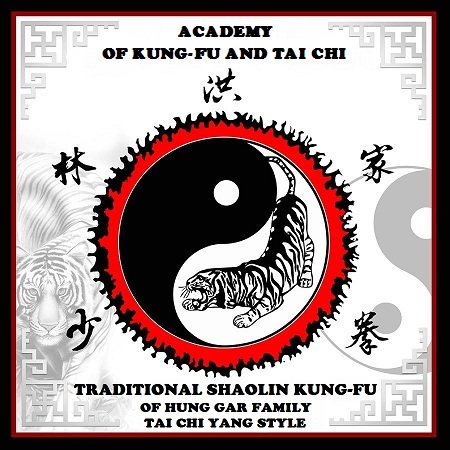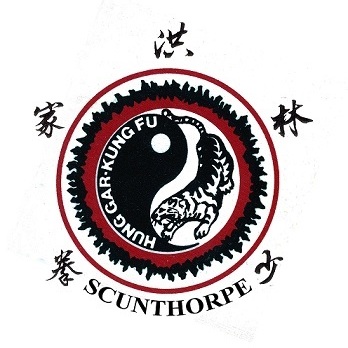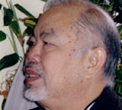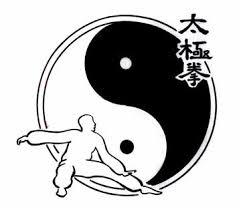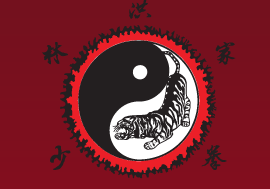
SCUNTHORPE ASSOCIATION
OF KUNG-FU & TAI-CHI
TRADITIONAL SHAOLIN KUNG-FU
OF HUNG GAR FAMILY
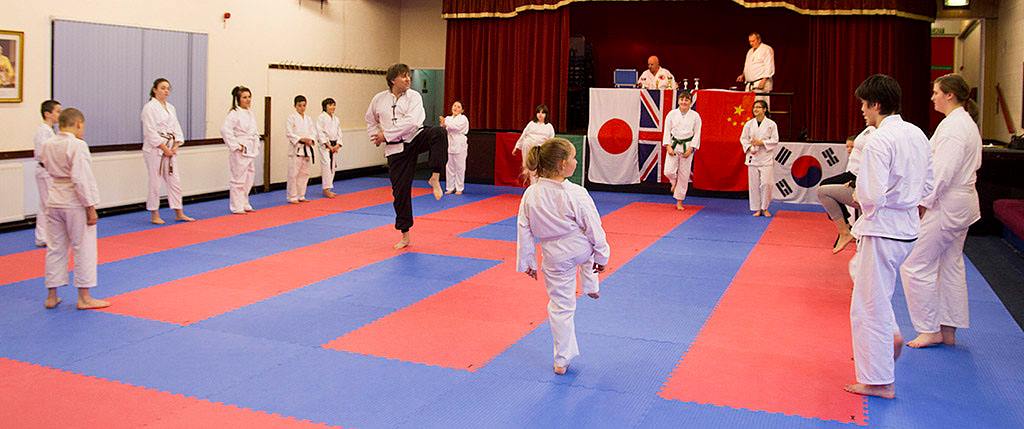

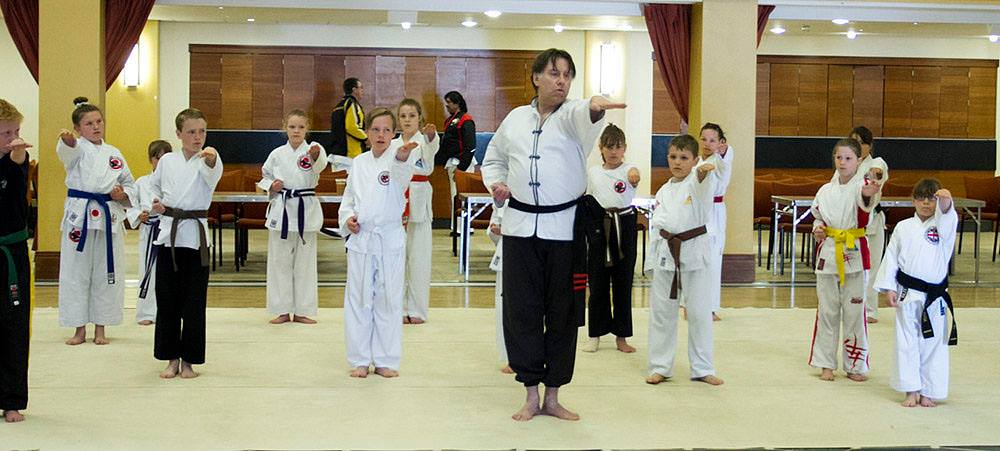
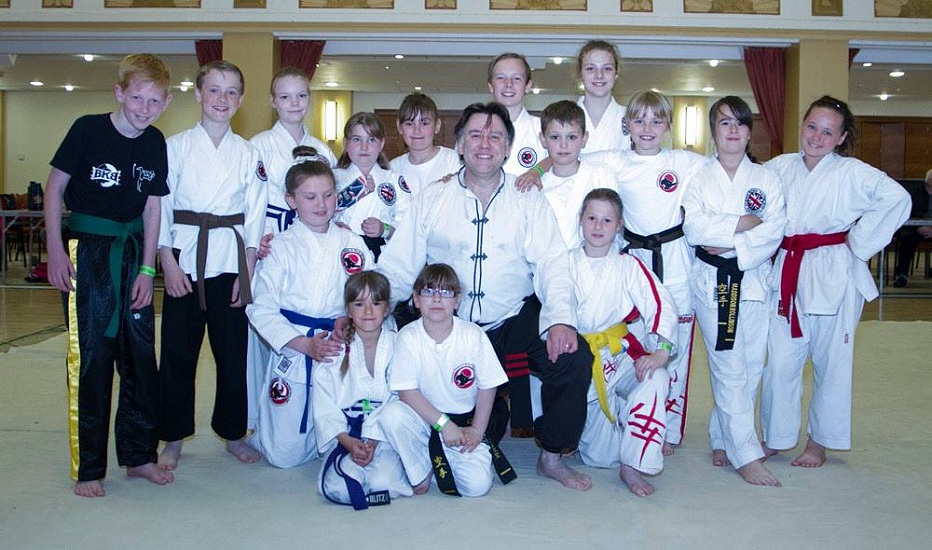
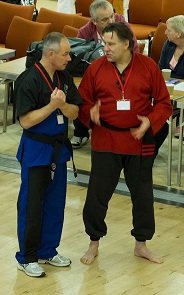
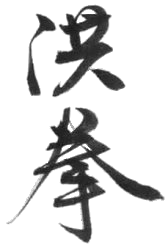
Myths and legends
There are at least three versions on the birth of Hung Ga, every school or branch defends his as being the only and real version, in reality three are connected between them and allow to seize well the wealth of this style.
If it is true that the most representative branch of Hung Ga is unquestionably the one of the Great master Wong Fei Hung who in XIX century gives the definitive face has what is going to become the revival of Hung Ga or new Hung Ga, they have all in common the origin which goes back to the Monastery of Shaolin and to the events following its destruction by the fire in 1736 by the Manchu.
Emperor Mandchou knew that to the monastery of Shaolin the monks trained for the Martial arts and knowing the rivalry which existed between Shaolin and the monastery of the mount Wu Dang, he instigated the jealousy between them and used a monk defrocked priest of the Shaolin converted to the White Taoism, the monk Pak Mei also called «white Eyebrow » and his pupil Li Pak Shan to attack the monastery and set on fire in to it; many monks died in the attack but five of them managed in to escape: Hu you ti, Fang Ta Hong, Choi Te Chung, Li Che Kai and Ma Shao Hing who ran away southward to escape the aggressors.
Some of them decided to change name by precaution. Hu Te Ti became Hung Te Ti, Fang Ta Hong became Lau Ta Hong, and Ma Shao Hing became Mo Shao Hsing and they decided to create in common five schools to spread the education of Shaolin according to their new surname: Hung Ga, Choi Ga, Li Ga, Lau Ga and Mb Ga
Hung Te Ti had a pupil called Miao Hsien considered as one of the five Masters De Shaolin, He had a girl called Miao Tsui Ha who got married to Fang De and of their union is born a son who will be called Fang Shi Yu one of « ten tigers of Shaolin » who had for brother-in-arms another « tiger » Hung Gee Kuan who got married to the niece of Fang Shi Yu, Fang Wing Chun.
Hung Gee Kuan was a trader of tea of royal family and when he hears what happened at the monastery of Shaolin, he takes back the name of Hung in memory of founding emperor Hung Mun of the dynasty Ming and killed Pak Mei to avenge Shaolin. Certain versions add the fact that the family of his wife Fang Wing Chun would also have been killed by Pak Mei or his band and it would also be one of reasons of his vengeance.
In a parallel at the same time in the monastery of Fukien the abbot Gee Sim, who is an expert of the Shaolin boxing (in particular the black Tiger), has formed a pupil Luk Ah Choy who decides to join Hung Gee Kuan to pursue his fight against Manchu. It is at this moment there that Hung Gee Kuan will have joined famous « Shen Hung » or red boats which transported the members of troops of Chinese Opera everywhere in the country.
Hung Gee Kuan was an expert in the Shaolin boxing among which five animals; with Luk Ah Choy he is going to perfect the boxing of the black Tiger and with his wing wife Fang Chun who was an expert of the boxing of the crane that she had learnt of Fang Shi Yu and a nun (some people speak about a hermit) Ng Mui or Wu Mei the boxing of the white crane; and it will be him the first one to combine these two systems in one: the « boxing of the tiger and the crane ».
It is so of the story that the various branches diverge and has we are now with three different stories:
1) The name of Hung Ga comes from « Shen Hung »
Indeed there is a Chinese saying which says « boats in the South, the horse in the North », and so we speak about the posture of the « rower » (Jeung Ma Bo) in the South and of the posture of the « rider » (My Bo) in the North, but this remains a little bit restrictive as explanation, in reality, fact of speaking about the origin of Hung Ga from the name of the small red boats « shen hung », it is a way of explaining the way of traffic and thus information of the Chinese resistance in the Manchu, fact of hiding inside the troops of the opera and in this way there of be able to keep practising their Art.
In reality "Shen Hung" it is small flat boats with long reams which allow to move the lengths of rice fields. Quite naturally, we fall in the importance of the notion of balance and powerful postures of the South to be able to have a practice in these boats and the almost usual use of the long sticks (long poles) issued from the reams of the same boats in Hung Ga as stick of the nine trigrammes (Ba Gua Guan) or the sticks of six and a half points (almost three meters) in Wing Chun (Look Dim Bun Kwon).
Besides, we could think that the name of boats « shen hung » stays a homonym of « shen hung » or the red spirit (hung is also hero as we shall see further), what could explain the second story.
2) The name of Hung Ga comes from « hero » symbol of the resistance and the secret societies « Hung Moon Raquo » and the sets of three
We saw that originally in year 1736, having escaped the fall of the monastery, one of the monks decides to change name, it is Hu Te Ti, but Hu it is also tiger in the language of the North, and he changes his name for that of Hung which means red or hero, what is an indication of the intention of the monk to change life, but also that we are in a mythical and legendary context, the importance of names as symbols is obvious; According to the « story » five monks came from the monastery of Song shan in Honan what means of the North (the monastery being situated in the north bank of the Yang Tze Kiang and rather in the bed of the Huang He or the yellow river) and went down in the South towards the monastery known Ju Liait Shah later as Shaolin of the South in Fukien (south shore of the Yang Tze Kiang the beginning of the South of the antique hunting), and got organized in secret societies with a single watchword "Fang Tsing Fu Ming", in other words " down with the tsing (or ching Manchu dynasty) let us restore the Ming ( Chinese dynasty) ".
According to the founding narrative of Tien Ti Houei (Assembly of the Sky and the Earth), in the fall of the monastery of Shaolin five monks escaped and decided to to transmit the spiritual inheritance of the monastery (we find our five ancestors Hu Te Ti, Fang Ta Houng, Ma Chao Houng, Li Sih Khai and Thsai Teh Chung), they were joined by five horses traders, these characters being other than Off the law; and they will be called « the five tigers ». Always according to the founding mythical narrative of Tien Ti Houei, they were in charge of the lower lodges ( the terrestrial aspect), it was Wu Thian Ching, Li Sih Chi, Houng Thai Sui, Yao Bieh Tah and Lin Yung Chao.
At this stage there, we cannot disregard the role played by secret societies in China, call back at first that the word « Hung » (Hong) means red and this is a very important detail to understand this theory of the origin of Hung Ga, thus this red word wants to say color of the ripening and which is the color of the dynasty Zhou (on 1050 - 250 av. JC), a dynasty dominated by the appearance of a red crow considered as the revelation of the dynasty, this color being traditionally attached at sunrise, Master Lung Kai Ming of the school Hong Chuan or the Red fist based in Hong-Kong which is a school at the base of the North referring to Shaolin teach a form called Xi Ming Chuan or of the sun of the west or the sunset (the West being the place or the sun lies down), allows to understand in a esoteric way the link enter the rising sun (the return of the dynasty Ming in the power) and the setting sun or the fall of Ming and his occultation; moreover "Fang Tsing Fu Ming" can also be read "down with the darkness, let us restore the lightness); what was one of watchwords of Tien Ti Houei (society of the Sky and the Earth) otherwise known as « sets of three ».Il would also need to add that the word « Hung » can be also translated by «rainbow bridge » between the sky and the earth signs Of alliance (and some people will say about hope), moreover the branch of the Great master Huang Chi San in Canton and the Great master Peng Nam, considered as a national treasure in China and unfortunately disappeared in 1991 (both teacher le Wing Chun and the Hung Ga together), decline the origin of their branch directly of Tien Ti Houei.
Thus by escaping southward the five monks would have created a brotherhood with as purpose to restore the Ming in the most exoteric sense of the term and to restore the "light" and this society will be called Hung mun in homage to the nickname of the first emperor of the dynasty Ming, Zhu Yuan Zhang and who will more be known as the « society of the sky and the earth » or Set of three, which will rise to several other sects as San Tien Houei (society of the three fists), Ts' ing Ti Houei (Society of the crystal clear Water), or Pei Tao Houei (Society of the Doubles broadsword) which will be very active and will be on the basis of several uprisings in XIX century. Societies were always connected with the boxing and essentially with the boxing of the South until the famous « red heads » or in the Yi Ho Tuan or the fist of the harmony and the justice, all these societies will have the boxing in common but also the archetypes and the colors essential to know the white (symbol of sky), the black (symbol of the water) and the red (symbol of the brothers or the heroes).
3) The Hung family (from Hung Gee Guan to Wong Fei Hung in our days)
It is doubtless the story the most spread at the followers, owed essentially to the personality of a key character named Wong Fei Hung, it is from Him and his followers that Hung Ga will gain its letters patents all over the world.
From the meeting between Hung Gee Guan and Luk Ah Choi the style is designated in a almost definitive way the meeting between the techniques of five animals of Shaolin, and the techniques of Crane brought by Hung Gee Kuan (among others the contributions of his wife Fang Wing Chun), and the black tiger stemming from the teaching of Abbot Gee Sin to Luk Ah Choi, what will become later Hung Ga and known as style of the Tiger and of the Crane from now on; (we shall make a small private conversation to indicate that from Fang Wing Chun's death her husband Hung Gee Kuan will systematize the style which will develop in a independent way but traditionally connected with Hung Ga as Male style and Female or Yin and Yang).
Hung Gee Guan is the creator of the form Gung ji Fook Fu Kuen or the tiger which waits in the posture of the bow(arc), which is considered as the mother's form of the systême, Luk Ah Choy his best pupil was Kwok Yan (some people think who was also a follower of Gee Sin), He teaches Leung Kwan so known by his nickname Tid Kiu Sam (bridge or iron arm wrestling), due to his extraordinary strength and his big implanting obtained due to his work with Kwok Yan, He will be the creator of the form Tid Sien Kien or the iron wire which is certainly the most advanced form of Hung Ga, it connects the strength and the flexibility, it is not a form of fight but a form of strengthening especially organs and energy as well as muscles and tendons with a strong work of implanting, this form formerly came true by reciting a poême or a song, it is essentially a question of link the breath and the feelings within the sound and the movement.
Another pupil of Luk Ah Choy it was Wong Kai Ying (some indicate that it was not him but his father Wong Tai), He inherits of the whole Luk Ah Choy's system and was considered like one of the ten tigers of Canton, He was the father the most famous of every one, Wong Fei Hung who was also paid in traditional medicine what allowed him to travel everywhere in China and so to meet the best experts of the boxing: he was born has Nam Hoi in the kwantung (Canton) in 1847, many of Masters came to challenge him but nobody succeeded in being right of Him what made him famous in all the South China as well as his famous Po Chi Lam private hospital. Wong Fei Hung was also an excellent performer of the Dance of the Lion, and so these two aspects were introduced into Hung Ga must to know the traditional medicine or has « Dar » and the Dance of the Lion.
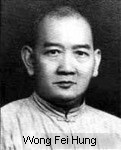
More than 80 movies redraw Wong Fei Hung's life which besides being an excellent doctor organized the militias of Canton, several Masters and experts turned his legendary life, as Kwan Tak Him, Liu Chan, Shek Kin (seen in operation Dragon with Bruce Lee), and Chan Hon Chung the last patriarch of the Hung Ga in Hong-Kong.
Wong Fei Hung got married several times in its life (four times) but it is its last marriage with Mb Kwei Lan (Wong was 60 years old and Mok Kwei Lan 16 year old), who sealed and strengthened the links with the clan of Mo-Ga (one of the five clans from the origin, survivors of Shaolin, the other Choy and Li merged giving the style Choy Li Fut Ga and the small style Lau-Ga we also find him in Mo-Ga, it will be Master Lam Cho who will introduce the forms from lau-Ga into Hung-Ga later), It would be necessary to indicate that the style Li keeps developing as well as the style Mo-Ga less known, but than curiously for a style said from the South it is by its blows of the powerful and fast kicks that it is known, this style is at present divided into two branches that of Mok Qing Chiu and that of Mak Shing Mo).
It is important to indicate that it is from Wong Fei Hung that the style is going to divide between those of the old Hung Ga rather scattered in the South of China, Hong-Kong Singapore and Malaysia, as Hung Ga in Taiwan with a teaching on five animals of shaolin of independent form but which is connected too Wong Fei Hung as well as Hung Ga of Master Yuen Yik Kai which taught besides the five animals of independent form, five fists Dragon, and which redraws their origin to Miao Hsien and to Wu Mei (and thus to Fang Wing Chun), that of Master Kwong Wing Lam apprentise of Leung Wah Chew or that one in Malaysia of Master Wong Kiew Kit which redraws its inheritance to the monastery of Shaolin of the South; and that says of the new Hung Ga from Wong Fei Hung, Master Lam sai Wing last Great master of the style, and Master Tang Fong both pupils of Wong Fei Hung as well as Lin Shi Jong, Kuei Shao Chi, Liang Kuan, and Leung Foon among others.
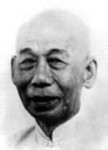
Tang Fong was a pupil of Wong Fei Hung and it is with Him that the first variants are known in the style in particular in Fu Hok Sheun Yin's versions or « the meeting of the Tiger and the Crane », this form creates by Wong fei Hung is the most representative form of the style, we could say that it is its brand image.
Tang Fong was in its youth a champion of the Martial arts but especially instructor in the brigade Tao Tao Tui during the Sino-Japanese war, one of his pupils was Master Chao Wing Tak (today retired, but his school continues), one of the pupils of Master Chao Wing Tak, Master Wong Ping Pui taught in Spain.
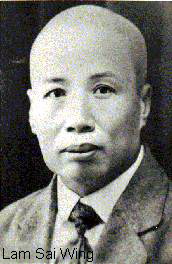
Lam Sai Wing (on 1860 - 1943) is unquestionably one of the last Great masters of the style, nicknamed " the Flying Butcher " because of his profession and his expertise of « butterflies knives » or Bart Cham dao as well as of the sword « night watchman » close to techniques of the crane, several stories surround this character of legend as well as its popularity due to his capacity to fight, as in the righteousness of his principles, although against any idea to use the Martial Art as way to make use of its strength in any occasion; he turned out confronted with several challenges whether he had to honor; one furthermore parlants it is that to fight a mastiff opponant and to kill him at once with a kick, so fight against a said monk "iron head" against which it was obliged to fight because he terrorized his city and he won as well with a sudden kick named « the kick in the shade of the moon », stemming from the form of the Tiger and the Crane
Lam Sai Wing had no descent and he adopted his nephew Lam Cho in the death of his parents and grown him up as his own son, another one of his pupils is the last patriarch has Hong-Kong Master Chan Hon Cheung who founded the Hong Kong Chinese martial Arts association HKCMAA in the 70s and gather most of the Hong-Kong's experts in the same association, he is rewarded by the own queen of England Elizabeth II, we also speak about Chiu Kao but it would seem that he was rather a pupil of Lam Cho.
New Hung Ga at present is represented by Lam Chun Fai, son of Lam Cho, Wong Yiu Ching who teaches has San Francisco USA, Chiu Way and Chiu Chi Ling sons of Chiu Kao in his branches the most known for the Westerners, but this does not mean that other branches remain in particular Tang Tung Wing pupil of Tang Kwok Wah another pupil of Lam Jo which teaches in Greece and which showed Hung Gar and Wing Chun. And Frank Yee from the branch of Tang Fong.
